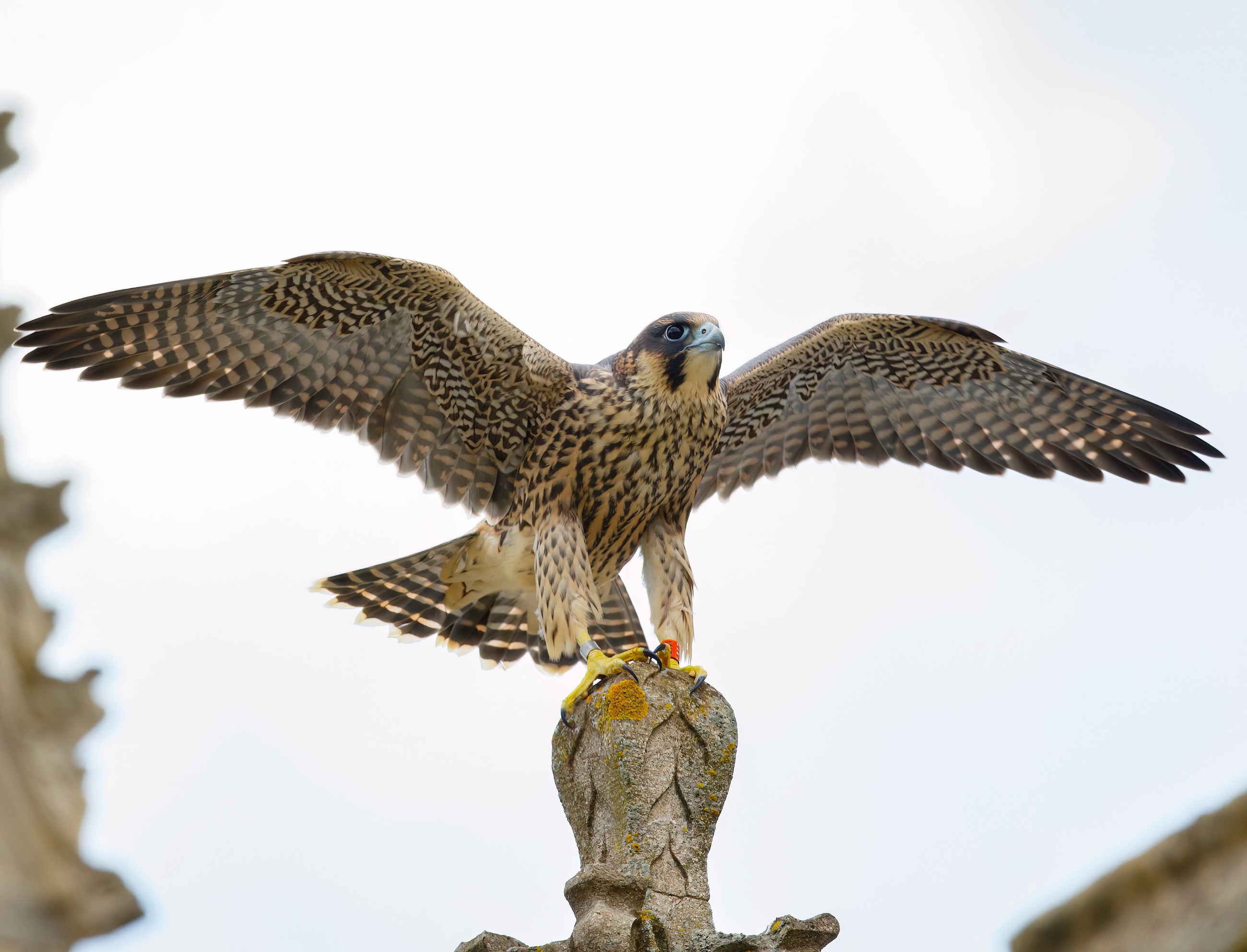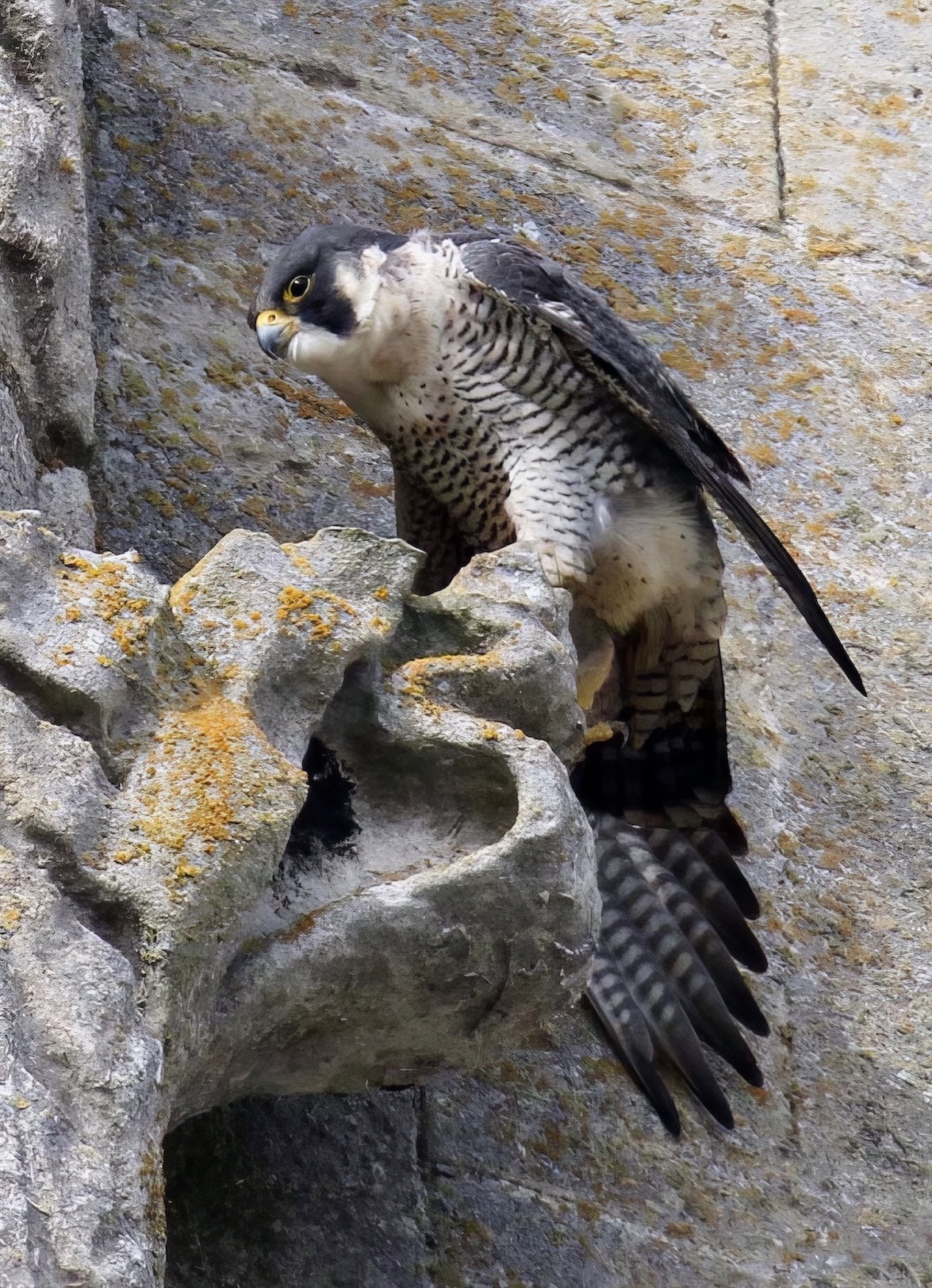Peregrine Falcon Falco peregrinus
Scarce but widespread resident, passage migrant and winter visitor; has bred since 2003.


The Peregrine Falcon population in the UK crashed in 1955-57 following the introduction of new organochlorine pesticides, the cyclodienes, which include aldrin, dieldrin and their derivatives, which were used as seed dressings. DDT was widely blamed but it should be noted that DDT/DDE reduce reproductive output by causing eggshell thinning. The Peregrine population did not decline until the late 1950s, after a decade of the use of DDT and of observations of egg-thinning, but the cyclodienes are much more directly toxic to birds, including Peregrines, and to other vertebrates(Greenwood 2021). The population began to recover very soon after the cyclodienes were withdrawn from use (Note that Peregrines did not breed in the county until much later).
Described as a scarce migrant and winter visitor by Lorand & Atkin (1989), the change in status of this charismatic falcon has been remarkable with the first confirmed breeding record in 2003 when a well-grown juvenile was found in a nest on an industrial site near Scunthorpe. Breeding was suspected in several earlier years 1997-2002 but wasn't conclusively proven, and it wasn't realised at the time that pylons were possible nest sites! Peregrines have regularly bred ever since and have adopted not only pylons, but quarries and a variety of man-made structures from cathedrals to power stations, and other industrial buildings. Use of the pylon nest sites has allowed an amazing increase in the last ten years in the north of the county with no less than seven pairs present on pylons in 2020.
RBBP records show an average of 22 pairs per year bred during the period 2013-2017. Productivity is highly variable with frequent losses of fledglings from buildings and pylons but purpose-built nest boxes in several sites have a better fledging record. In the most recent five year period, 2017-2021, 5-10 pulli have been ringed each year from accessible nests. These bear orange colour rings, signifying a chick from the east of England (mainly Lincolnshire, Norwich, Leeds, and Nottingham) ; blue colour rings signify birds from southwest England and red from northwest England. Breeding pairs are often resident in their territories, but young and non-breeding immatures disperse around the county and there is evidence of arrivals of wintering and passage birds from other areas of Britain. Birds ringed as nestlings in other parts of the UK have regularly been found or seen in the county, including birds from Scotland, Wales, and several English counties (Kent, Staffordshire, and Yorkshire). Foreign-ringed birds have come from Finland and Norway.
In recent years there have been a number of records of birds showing characteristics of Tundra Peregrine F.p. calidus. A female caught in a plover trap at Humberstone Fitties on September 28th, 1910 and formerly accepted as of the North American race F. p. anatum, was found on review by the BOURC in 2004 to be an example of the nominate race and as such the record was removed from the British List.
(Account as per new Birds of Lincolnshire (2021), included October 2022)
